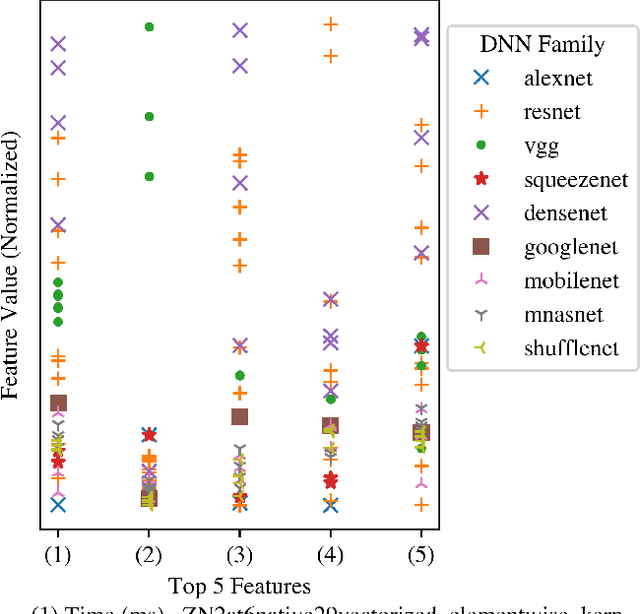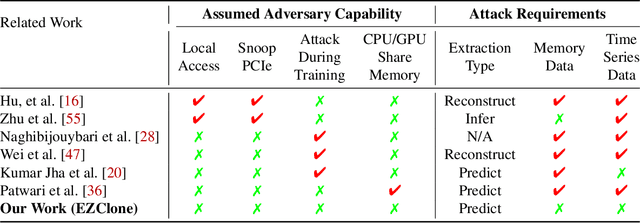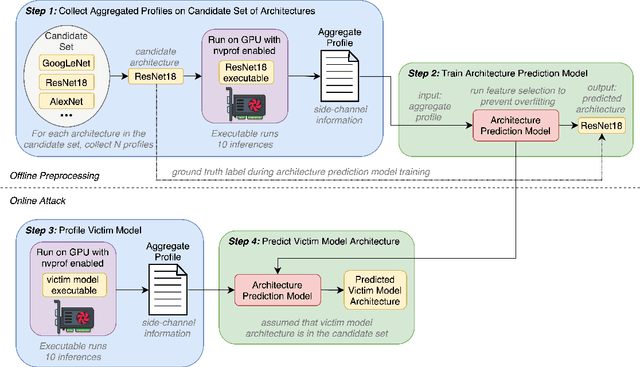Jonah O'Brien Weiss
EZClone: Improving DNN Model Extraction Attack via Shape Distillation from GPU Execution Profiles
Apr 06, 2023



Abstract:Deep Neural Networks (DNNs) have become ubiquitous due to their performance on prediction and classification problems. However, they face a variety of threats as their usage spreads. Model extraction attacks, which steal DNNs, endanger intellectual property, data privacy, and security. Previous research has shown that system-level side-channels can be used to leak the architecture of a victim DNN, exacerbating these risks. We propose two DNN architecture extraction techniques catering to various threat models. The first technique uses a malicious, dynamically linked version of PyTorch to expose a victim DNN architecture through the PyTorch profiler. The second, called EZClone, exploits aggregate (rather than time-series) GPU profiles as a side-channel to predict DNN architecture, employing a simple approach and assuming little adversary capability as compared to previous work. We investigate the effectiveness of EZClone when minimizing the complexity of the attack, when applied to pruned models, and when applied across GPUs. We find that EZClone correctly predicts DNN architectures for the entire set of PyTorch vision architectures with 100% accuracy. No other work has shown this degree of architecture prediction accuracy with the same adversarial constraints or using aggregate side-channel information. Prior work has shown that, once a DNN has been successfully cloned, further attacks such as model evasion or model inversion can be accelerated significantly.
Hardening DNNs against Transfer Attacks during Network Compression using Greedy Adversarial Pruning
Jun 15, 2022

Abstract:The prevalence and success of Deep Neural Network (DNN) applications in recent years have motivated research on DNN compression, such as pruning and quantization. These techniques accelerate model inference, reduce power consumption, and reduce the size and complexity of the hardware necessary to run DNNs, all with little to no loss in accuracy. However, since DNNs are vulnerable to adversarial inputs, it is important to consider the relationship between compression and adversarial robustness. In this work, we investigate the adversarial robustness of models produced by several irregular pruning schemes and by 8-bit quantization. Additionally, while conventional pruning removes the least important parameters in a DNN, we investigate the effect of an unconventional pruning method: removing the most important model parameters based on the gradient on adversarial inputs. We call this method Greedy Adversarial Pruning (GAP) and we find that this pruning method results in models that are resistant to transfer attacks from their uncompressed counterparts.
 Add to Chrome
Add to Chrome Add to Firefox
Add to Firefox Add to Edge
Add to Edge